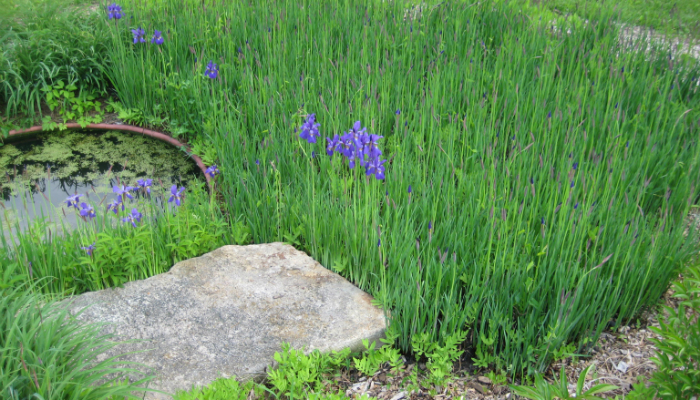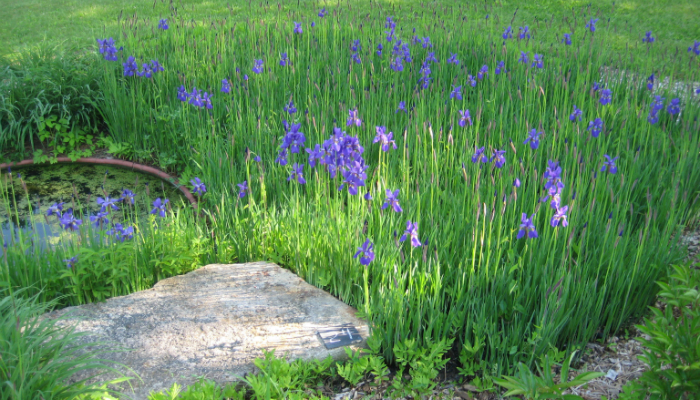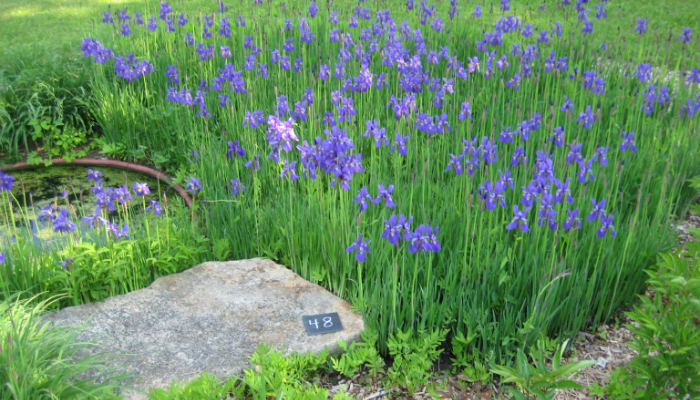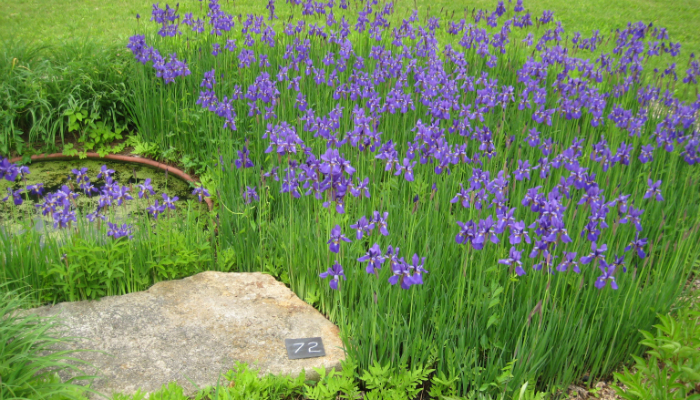Effects of Diversity: Boom and Bust in Hummingbird Heaven
The natural world is a complex place, so when we try to understand causes and effects, it is easier to cope with greatly simplified systems, like lab rats in cages and plants in greenhouses. But then we don’t know whether the results are relevant to the real world. The scale of our backyards is a useful intermediate, somewhat simplified but still driven by many natural processes. So join me today in my yard to look at a bed of Siberian iris over 72 hours – spaced 24 hours apart – and we’ll see why microclimates, even on very small scales of a few days and couple of inches, are an important component of natural and man-made systems.

photo #1
In photo #1 the large flat stone heats up by day in the sun and then gradually releases a tiny bit of that warmth into the soil beside it, so the iris roots get a little jump start on the coming of summer and bloom a day or two sooner than their compatriots only inches away. The little pond does the same, so that in photo #1 the very first blooms are close beside stone and pond while all the other plants are still in bud.

photo #2
But only 24 hours later (photo #2) dozens are now blooming, after another 24 hours (photo #3), about half the patch is aglow and soliciting pollination.

photo #3
A day later (photo #4), at least 90% are in flower.

photo #4
These scenes also suggest that all these iris plants must be very similar to each other in order to respond nearly synchronously. And indeed, they were originally gifts from that generous lady, Nancy Seiberling, which I later divided and divided again (cloned) into multiple plants. She had done the same before me, and in the nursery trade this selection is labeled Caesar’s Brother, and nurseries have been dividing it for decades. So in fact, the entire flowerbed in the four photos is more or less a single plant, which makes it a better experimental candidate, avoiding the complications of mixed genetics.
Hummingbirds in the vicinity, having returned a week or so previously, begin to sample the iris patch as it unfurls, leading, of course, to altercations between these feisty zoomers living on their all-day sugar high. No wonder they go into torpor on a cool night! If any of us lived fast on sugar all day and got cut off at night, we would crash also.
But alas, like so many man-made constructions, whether the stock market or the North Dakota oil, blooms go bust. In about a week or two, flowering is done for the year here and nectar production drops to zero because of the uniformity. A female hummingbird had better have staked out a territory that includes longer-term production if she expects to successfully raise a family here.
This is where a prairie, a woodland edge, or a wetland does so much better at being a valuable part of an ecosystem. For example, in my four-acre planted prairie nearby, the native spiderwort has a more diverse genetic mix than the iris monoculture. And this genetic diversity is combined with all of the little different microclimates and microhabitats – the gopher mound, the little wet draw, the shade of the young bur oak sweeping across a small area by day, the patch of deer bones adding extra phosphorus…
With all this mini-diversity, both genetic and topographic, my spiderwort spreads out its blooming and nectar production over four to six weeks, making it more continuously reliable as a food source. And this diversity also makes the species more adaptable to whatever conditions it experiences during that year. With this in mind, it’s easy to see why even small conservation easements of somewhat abused natural areas can be more valuable to wildlife than any of our formal and rather uniform landscaping projects. And those bigger conserved pieces of land? Gold.


